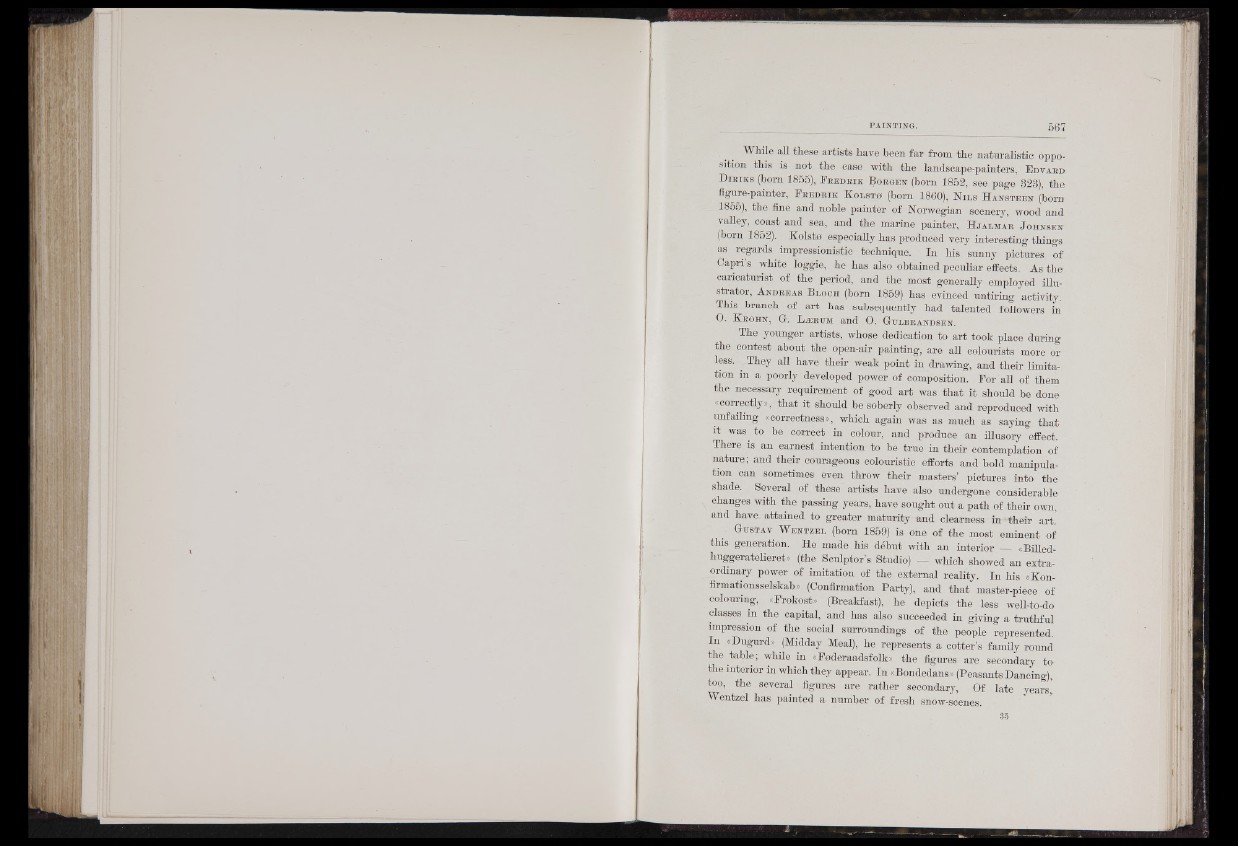
While all these artists have been far from the naturalistic opposition
this is not the case with the landscape-painters, E d v a r d
D i r i k s (born 1855), F r e d r i k B o r g e s (born 1852, see page 323), the
figure-painter, F r e d r i k K o l s t o (born 1860), N i l s H a n s t e e n (born
__ 1855), the fine and noble painter of Norwegian scenery, wood and
valley, coast and sea, and the marine painter, H j a l m a b J o h s s e s
(bom 1852). Kolsto especially has produced very interesting things
as regards impressionistic technique. In his sunny pictures of
Capri s white loggie, he has also obtained peculiar effects. As the
caricaturist of the period, and the most generally employed illustrator,
A n d r e a s B l o o h (bom 1859) has evinced untiring activity.
This branch of art has subsequently had talented followers in
0 . K r o h n , Gt. Lærum and O . G u l b r a n d s e n .
The younger artists, whose dedication to art toot place during
the contest about the open-air painting, are all colourists more or
less. .-They all have their weak point in drawing, and their limitation
in a poorly developed power of composition. For all of them
the necessary requirement of good art was that it should be done
«correctly», that it should be soberly observed and reproduced with
unfailing <<correctness»,, which again was as much as saying that
it was to be correct in colour, and produce an illusory effect.
There is an earnest intention to be true in their contemplation of
nature; and their courageous colouristic efforts and bold manipulation
can sometimes even throw their masters’ pictures into the
shade. Several of these artists have also undergone considerable
changes with the passing years, have sought out a path of their own,
and have, attained to greater maturity and clearness in ' their art.
G u s t a v W e n t z e l (bom 1859) is one of the most eminent of
this generation. He made his début with an interior JB« Billed-
huggeratelieret» (the Sculptor’s Studio) — which showed an extraordinary
power of imitation of the external reality. In his «Kon-
firmationsselskab » (Confirmation Party), and that master-piece of
colouring, «Frokost» (Breakfast), he depicts the less well-to-do
classes in the capital, and has also succeeded in giving a truthful
impression of the social surroundings of the people represented.
In «Dugurd» (Midday Meal), he represents a cotter’s family round
the table; while in «Foderaadsfolk» the figures are secondary to
the interior in which they appear. In «Bondedans» (Peasants Dancing),,
too, the several figures are rather secondary, Of late years |
Wentzel has painted a number of fresh snow-scenes.